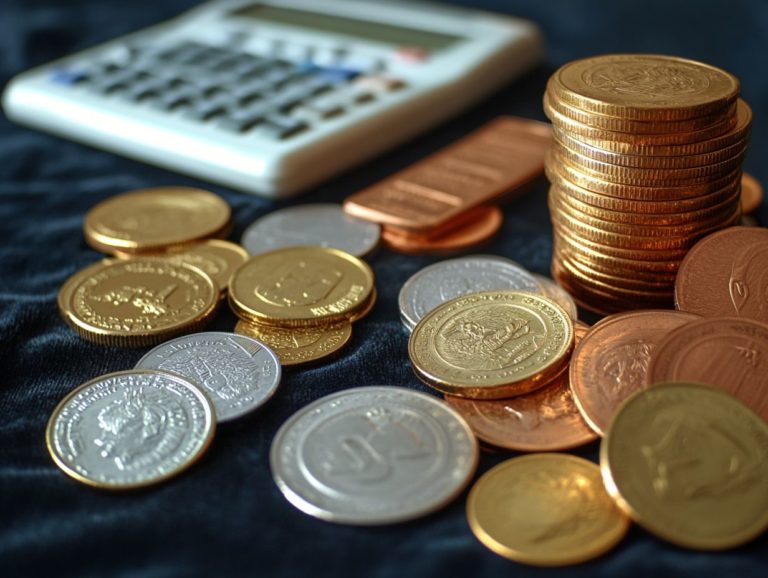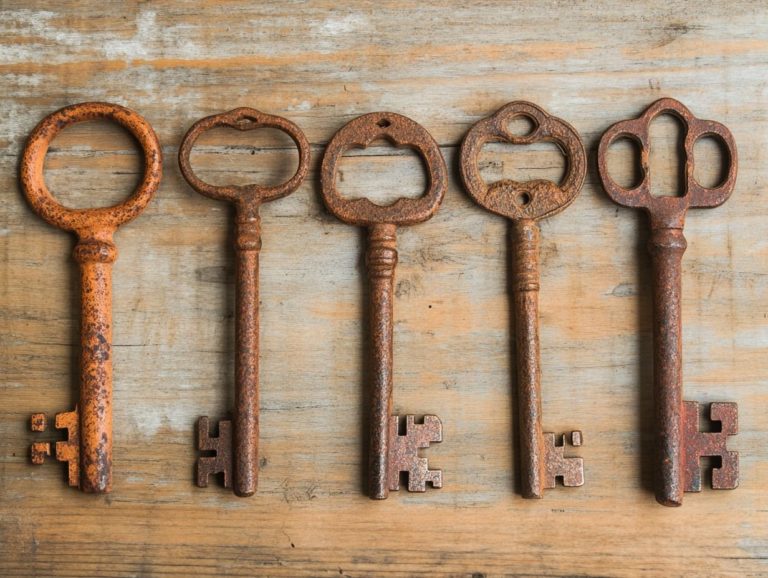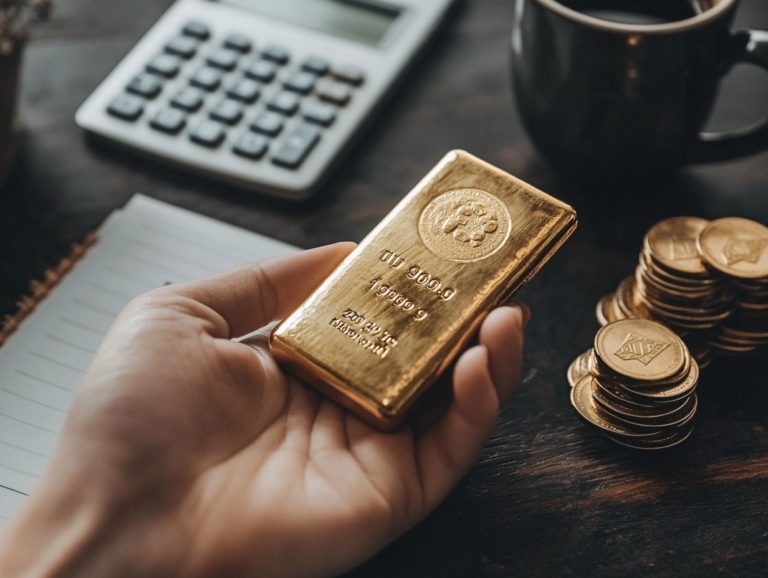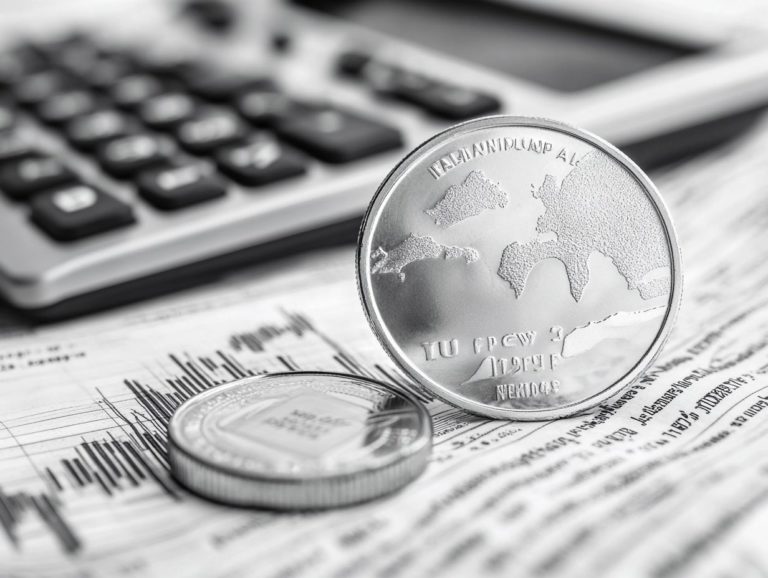The Best Practices for Precious Metals Investment
Investing in precious metals presents a rewarding opportunity. It serves as a robust hedge against inflation and economic uncertainty.
This article delves into the various types of precious metals, highlighting their benefits and essential considerations before you dive into this market. You ll discover the distinctions between physical and paper investments, effective risk management strategies, and valuable tips for successful investing.
Whether you re a seasoned investor or embarking on your journey, this guide equips you with the knowledge to navigate the world of precious metals with assurance and clarity.
Contents
- Key Takeaways:
- The Basics of Precious Metals Investment
- Factors to Consider Before Investing
- Methods of Investing in Precious Metals
- Tips for Successful Precious Metals Investment
- Frequently Asked Questions
- What are the best practices for investing in precious metals?
- How much of my portfolio should be allocated to precious metals?
- What are the benefits of investing in precious metals?
- Should I buy physical precious metals or invest in ETFs?
- What factors should I consider when researching precious metals?
- How can I ensure the security of my precious metals?
Key Takeaways:
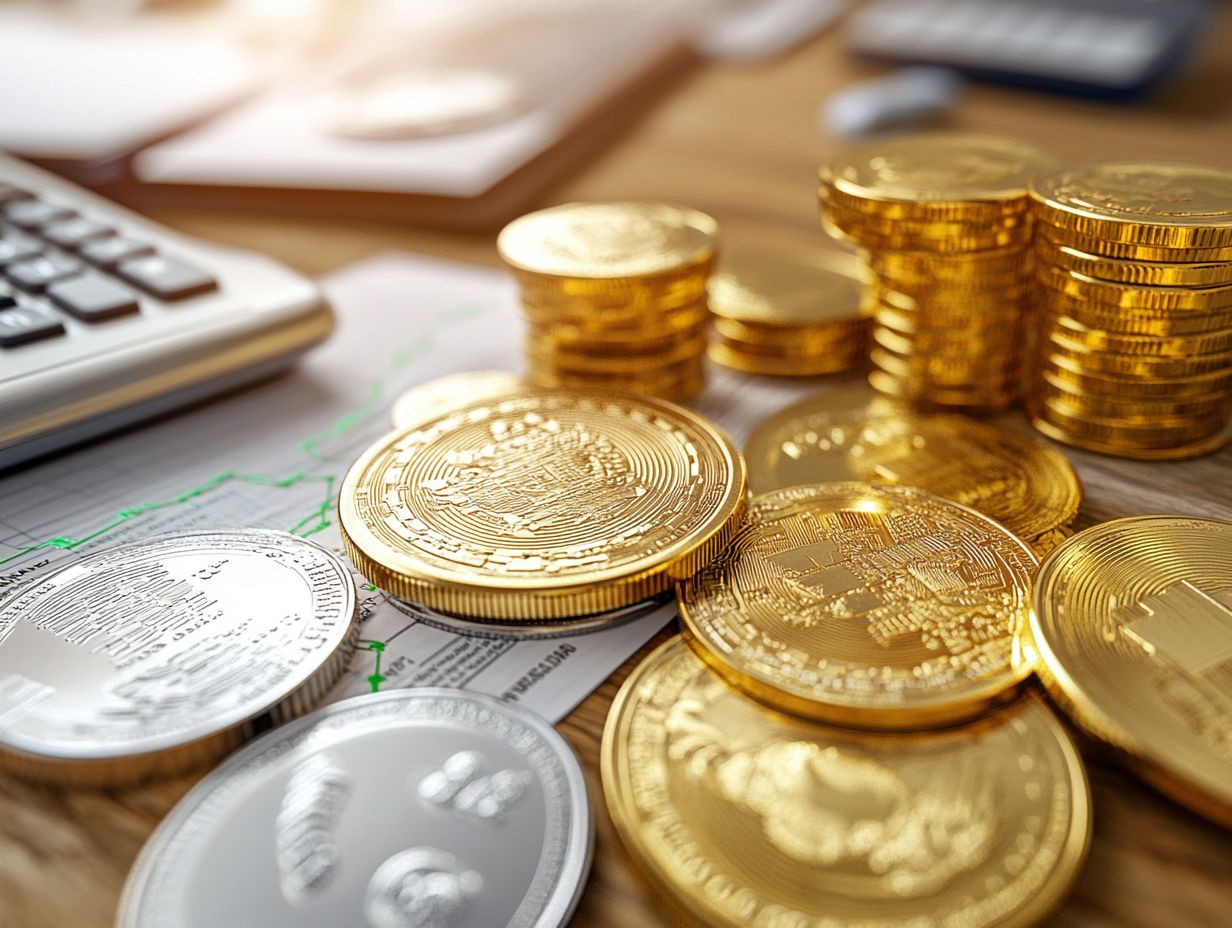
- Diversify your investments with both physical and paper metals.
- Conduct thorough research before making any investment for the best returns.
- Be patient and consider timing, as market trends can greatly impact value.
The Basics of Precious Metals Investment
Investing in precious metals offers a compelling opportunity to diversify your portfolio while protecting against economic downturns and inflation risks. This strategy involves acquiring tangible assets like gold and silver, which possess intrinsic value.
Gold and silver hold universal appeal in financial markets. Metals like platinum and palladium also play significant roles, providing diverse avenues to navigate market volatility and capitalize on emerging trends.
Understanding the Different Types of Precious Metals
Precious metals can be categorized into several types, including gold, silver, platinum, and palladium. Each metal boasts unique characteristics and investment potential.
These metals are vital in various industries, from electronics to jewelry, coveted for their intrinsic value and rarity. Gold is often seen as a safe haven, especially during economic downturns.
Silver, with its more accessible price point, serves both investment and industrial purposes. In contrast, platinum and palladium have gained popularity due to rising demand in automotive manufacturing and clean energy technologies.
As an investor, you’ll choose between bullion bars, which provide a straightforward way to own physical metal, and collectible coins, valued for their historical significance. Understanding these options is crucial for integrating precious metals into your balanced investment strategy. Additionally, knowing the best safe types for precious metals can enhance your investment security.
Benefits of Investing in Precious Metals
Investing in precious metals offers numerous advantages, especially during economic turmoil and inflation concerns. These tangible assets act as a safeguard against market volatility.
Take gold, for instance. It has a remarkable track record of maintaining its purchasing power over the long haul, even as the dollar’s value slips. During the 2008 financial crisis, gold prices soared by over 25%.
Precious metals function as a countercyclical investment; when stock markets falter, their demand often rises, helping to preserve wealth. A study from the World Gold Council revealed that incorporating gold can reduce overall risk by as much as 10%. For those investing in these assets, knowing the top 5 storage solutions for precious metals is essential.
Factors to Consider Before Investing
Before immersing yourself in investing in precious metals, consider several factors that can influence your investment results, such as current market trends and overarching economic conditions.
Grasping the nuances of precious metals pricing, employing sound risk management strategies, and seeking knowledgeable investment advice will help you navigate the complexities of this market.
Market Trends and Economic Conditions
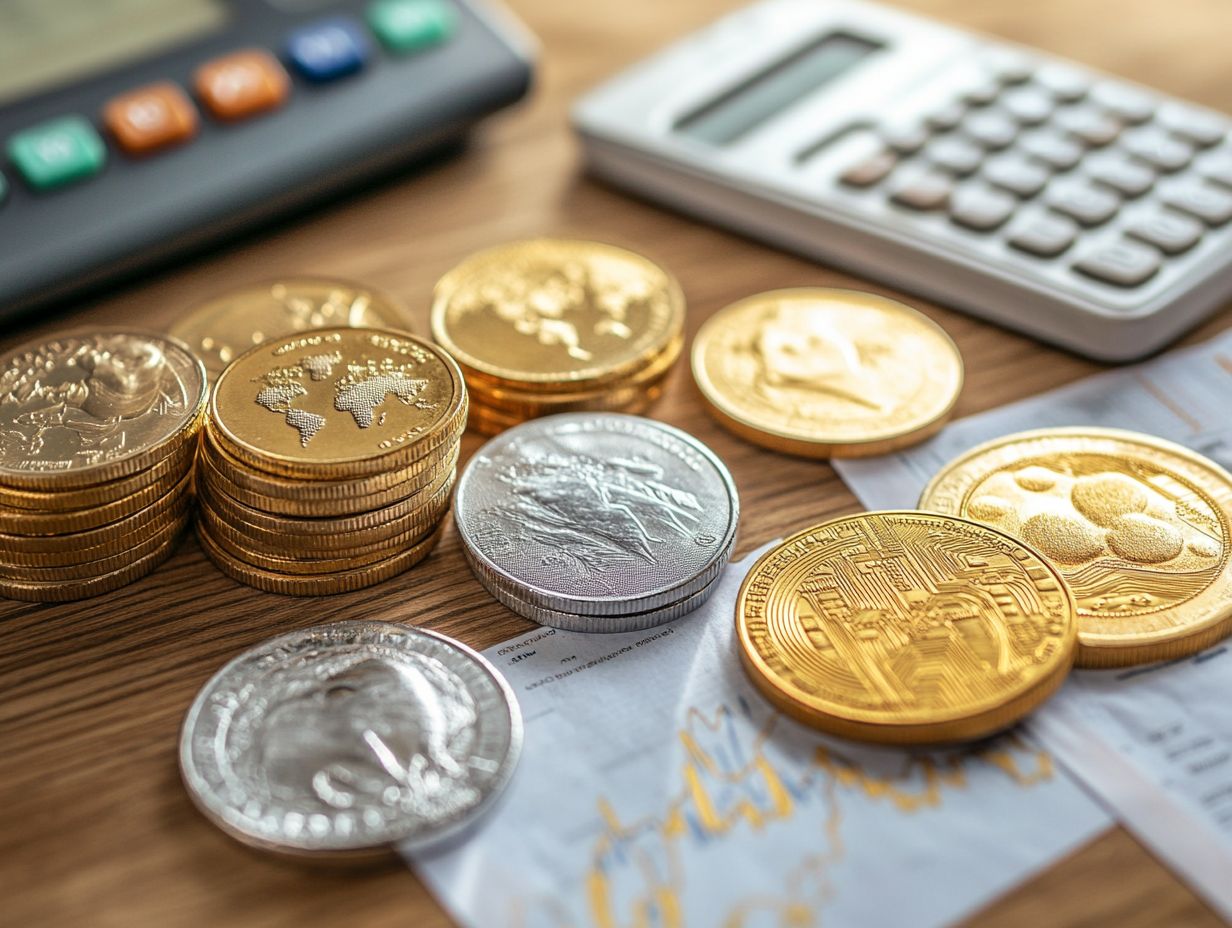
Market trends and economic conditions are crucial elements that shape the precious metals investment landscape. They influence aspects like inflation rates and the broader financial markets.
As an investor, keep a sharp eye on key indicators, especially interest rates set by central banks. These rates can either enhance or diminish the allure of gold and silver in your portfolio.
During times of rising inflation, the intrinsic value of these metals tends to climb, as they are regarded as a reliable hedge against currency devaluation.
Historical trends, such as the dramatic price surge of gold during the 2008 financial crisis, illustrate how market volatility can ignite investment in precious metals. When economic uncertainties spike now is the time to act!
Discerning investors understand that allocating a portion of their portfolio to these assets can serve as a protective buffer against potential losses.
Risk Management Strategies
Effective risk management strategies are essential for you as an investor in precious metals, especially considering the market volatility that often accompanies these investments.
By spreading your investments, you can lessen the impact of any single investment’s poor performance. Allocating a portion of your portfolio to precious metals, alongside other asset classes, strengthens your overall financial resilience.
Setting clear limits on your investments helps you stay in control and make bold moves when necessary. These strategies not only help you mitigate potential losses, but also enhance your returns.
Transform your experience in precious metal investing into a more calculated and balanced journey.
Methods of Investing in Precious Metals
As an investor, you have a wealth of options for investing in precious metals, tailored to your distinct preferences and strategies. If you lean toward tangible assets, consider acquiring bullion bars, gold coins, or even numismatic coins.
If you prefer a more abstract approach, consider paper investments such as ETFs and mining company stocks. Each avenue offers its own set of advantages, allowing you to align your investments with your financial goals.
Physical vs. Paper Investments
The choice between physical and paper investments in precious metals is a pivotal decision for you as an investor. You can choose options like bullion bars and gold coins for physical investments, while ETFs represent the paper investment route.
Each option presents its own set of advantages and challenges, influencing your strategy and risk tolerance.
For example, physical investments provide you with tangible assets that can be securely stored, but they also require careful handling and might necessitate insurance against theft or damage.
On the other hand, paper investments offer greater liquidity, allowing you to buy and sell with ease through exchanges.
However, they come with the caveat of counterparty risk, which means the other party in a transaction might not fulfill their obligations.
By understanding these differences, you can better align your choices with your personal financial goals.
If you seek long-term, hands-on involvement, you might lean toward physical assets. Conversely, if you value flexibility and minimal maintenance, paper investments may be more your style.
Diversification and Portfolio Allocation
Diversification is a cornerstone of any sound investment strategy. Including precious metals in your portfolio can significantly enhance your asset allocation.
By bringing in assets like gold and silver, you can effectively mitigate the risks tied to economic downturns and market volatility.
Precious metals often retain their value or even appreciate during times of inflation or uncertainty, acting as a reliable safe haven for your capital.
To truly optimize the resilience and growth potential of your portfolio, consider a balanced approach that integrates precious metals with stocks, bonds, and other asset classes.
A good rule of thumb is to allocate around 10-15% of your total investments to precious metals. This provides you with exposure while still ensuring a diverse array of investment options, especially when considering the best vaults for storing precious metals.
Tips for Successful Precious Metals Investment
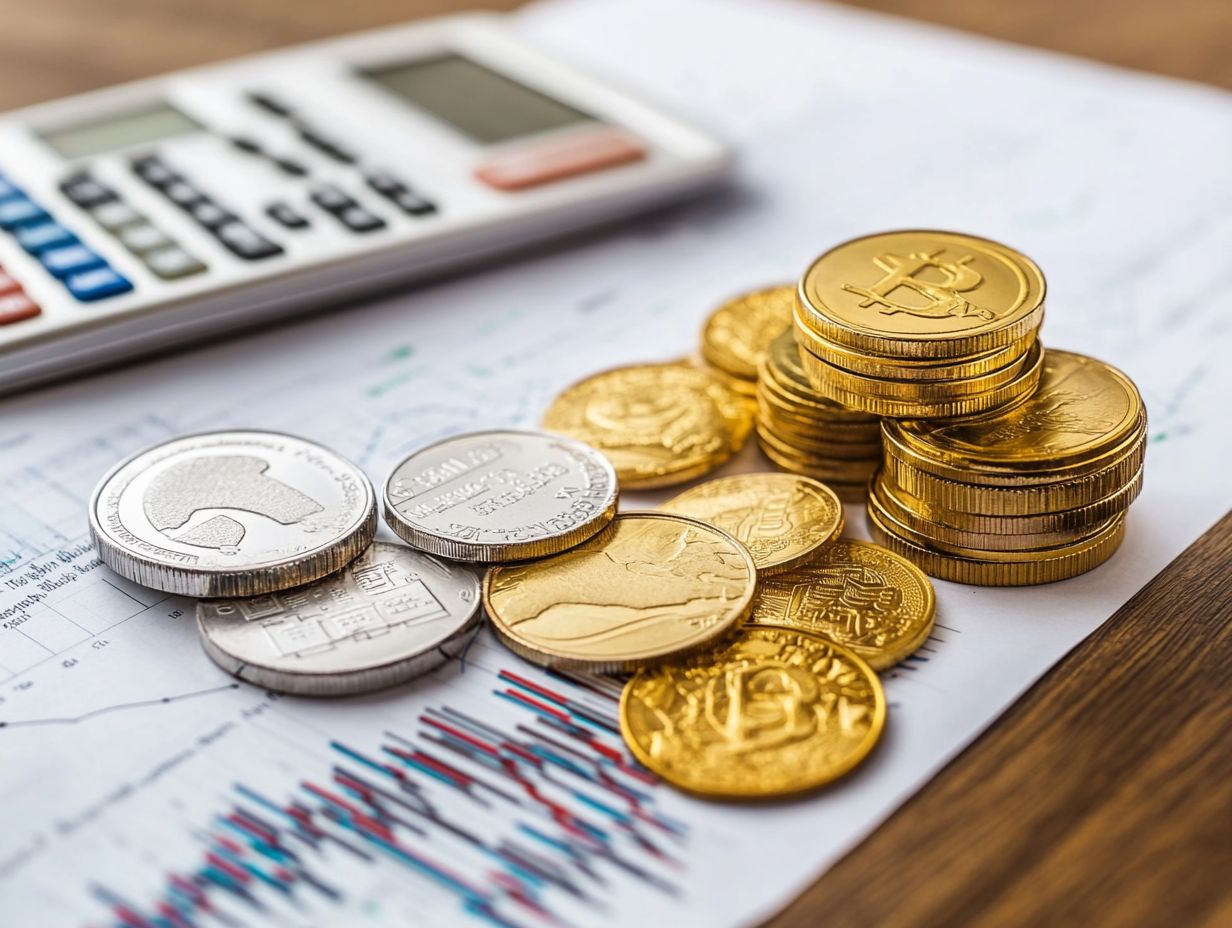
To achieve success in your precious metals investment journey, it s essential to embrace specific strategies and best practices. This includes conducting thorough research and exercising careful analysis, while also understanding the importance of timing in the market.
Research and Careful Analysis
Conducting thorough research is essential for making informed decisions regarding precious metals investments. This helps you gauge economic performance and market conditions.
Before diving into any investment, explore reputable financial publications, expert analyses, and advisory services that provide valuable insights on metals and commodities.
Evaluating economic performance indicators, such as inflation rates, interest rates, and geopolitical factors, can significantly enhance your understanding of market dynamics. A comprehensive approach helps you identify risks and find opportunities.
Staying informed is crucial it can mean the difference between a wise investment and a costly mistake.
Timing and Patience
Timing and patience are paramount in crafting a successful investment strategy within the precious metals arena, especially amid the ever-shifting landscape of market volatility.
By understanding the nuances of market cycles, you can significantly enhance your decision-making process. This understanding allows you to anticipate price movements accurately and seize opportunities as they arise.
It’s essential to acknowledge that markets will ebb and flow between periods of growth and decline. Exercising the patience to hold your investments during downturns can yield substantial rewards when the tide turns in your favor.
Educating yourself on key indicators such as supply and demand trends, geopolitical developments, and economic data is crucial. By leveraging tools like moving averages and resistance levels, you can identify optimal entry and exit points, allowing you to make informed decisions rather than reacting impulsively to market fluctuations.
Frequently Asked Questions
Here are some common questions about investing in precious metals:
What are the best practices for investing in precious metals?
The best practices for investing in precious metals include diversifying your portfolio, conducting thorough research, purchasing from reputable dealers, and storing your metals securely.
How much of my portfolio should be allocated to precious metals?
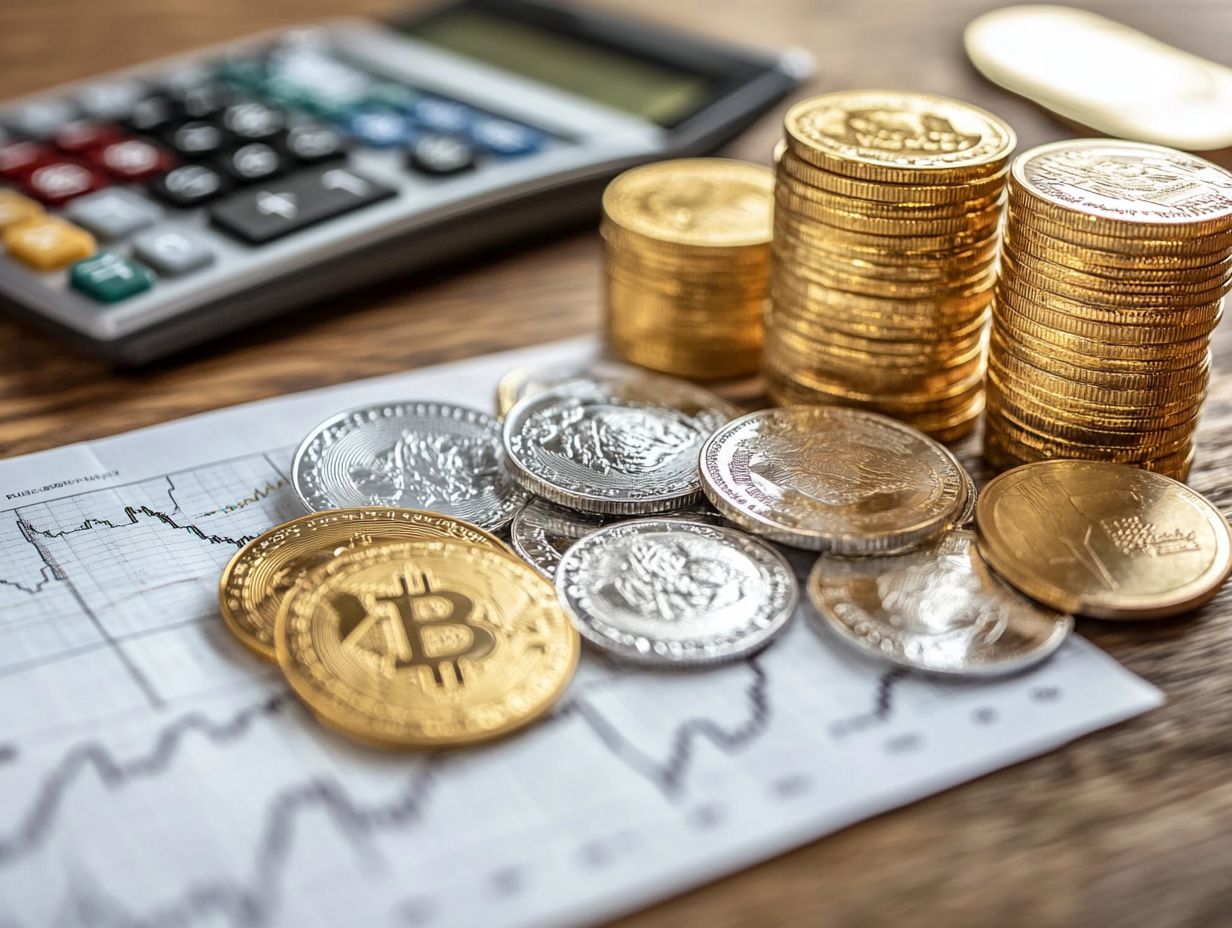
Financial experts recommend allocating 5-10% of your portfolio to precious metals to provide balance and stability to your investments.
What are the benefits of investing in precious metals?
Investing in precious metals can provide a hedge against inflation, economic downturns, and currency devaluation. It also offers a tangible asset that can diversify your portfolio.
Should I buy physical precious metals or invest in ETFs?
Both options have their advantages. Physical metals provide ownership and direct control, while ETFs offer convenience and liquidity. It is recommended to have a mix of both in your portfolio.
What factors should I consider when researching precious metals?
When researching precious metals, consider the current market trends, historical performance, supply and demand, and the reputation of the metal and dealer.
How can I ensure the security of my precious metals?
To ensure the security of your precious metals, consider storing them in a secure, insured facility. You can also invest in a safe or a safe deposit box. It is important to keep your investments confidential and only share information with trusted individuals.
Ready to take the next step in your investment journey? Start researching today!










